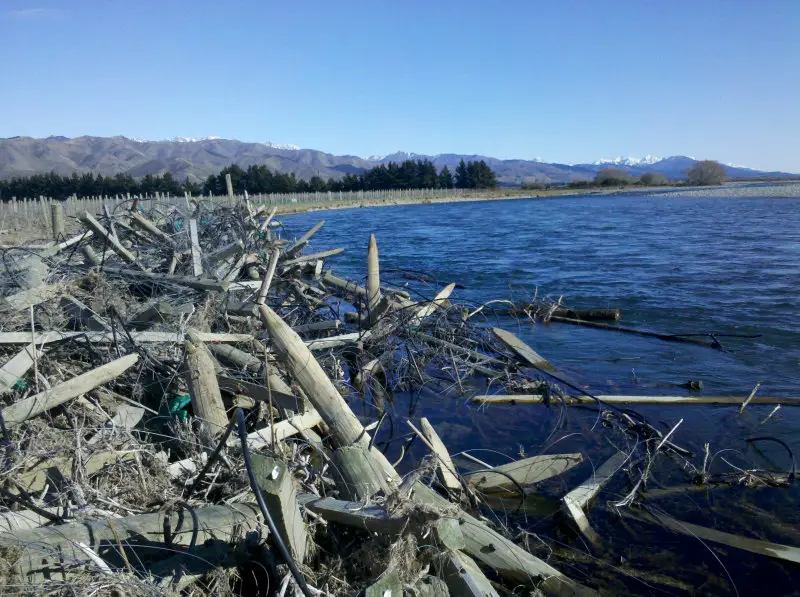Braided rivers have a place close to my heart, they are where I caught my first trout, followed by my first salmon a day later. Braided rivers are an ever changing network of interconnecting branches and channels. At the whims of the floods, the channels change. A deep pool one year could be gone the next, and channels split only to merge again. Others peter out, only to re-emerge as springs several hundred feet further downstream.
Most braided rivers typically occur where the land is steep. Often surrounded by quickly eroding mountains and melting glaciers.
They are rarely braided throughout their entire route, often becoming meandering as the gradient flattens, or all the branches forced into a single channel as they flow through gorges and mountainous terrain.
Below, I will share some of the many secrets I have learned fishing braided rivers, and why you to should consider giving them a try.
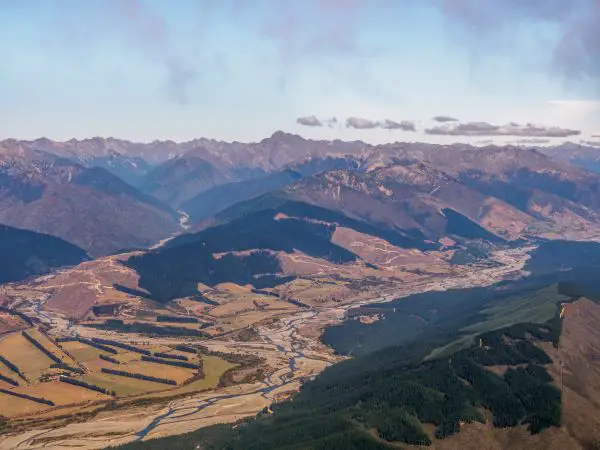
Where are Braided Rivers found
Braided Rivers are found throughout the world, but generally concentrated in areas with steep gradients and rapidly eroding mountains. The most famous trout fishing braided rivers are found on the east coast of New Zealand, Patagonia in South America, and in Alaska.
But there are examples of braided rivers throughout much of the United States, such as the White River in Washington and the Platte River and several of its tributaries as they flows through Nebraska.
There are also several braided rivers in Europe, many located in Northern Italy, draining from the Alps to the sea. While more still are found in Russia and Sweden. Finally, braided Rivers exist in Asia, often draining from the Himalayas. Many of these do contain trout, either natural or introduced.
What species of trout live in Braided Rivers
Brown trout seem to fair best in the fast flowing, ever changing nature of braided rivers. But, with suitable conditions and cold, clean water most species of trout can survive.
I have heard, the reason that Browns do better in braided rivers than Rainbows is because they are better adapted to survive the floods. Brown trout are likely to seek shelter in areas of lighter flow allowing them to ride out floods. While rainbows, apparently fight the current and end up exhausted getting washed downstream. Where there is a lake or meandering portion, populations of rainbow trout can also survive.
One of the biggest challenges trout face in braided rivers is the constantly changing nature. This changing nature means trout, rarely spawn in the braided portions, but rather travel further upstream where the river beds and flows are more consistent.
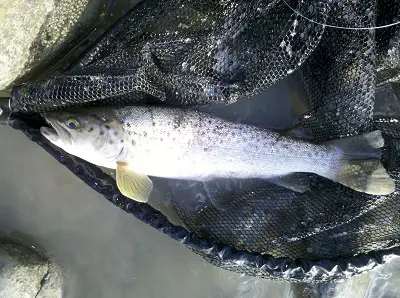
Steelheads and Salmon
Trout are not the only game fish that can be caught in braided rivers, many have healthy runs of steelheads and salmon. The salmon often rest up at the bottom of deep pools, before pushing on upwards on their spawning runs.
How to Fish for Trout in a Braided River
At first look, the sheer size of braided rivers can be a bit intimidating, with multiple branches, all of different volumes it hard to even know where to start. In large rivers, it might not even be possible to reach all of the branches.
I like to treat every braid as its own river, for the time ignore the rest. Slowly fish your way along its length, looking for trout holding in likely lays. I quite often find them hard against the banks. Braided rivers form a series of rapids and pools. The trout are often found at the bottom of the rapids where they enter the pools, and at times, they feed right at the head of the rapid. The long pools, and rapids themselves typically hold very few fish.
When trying to decide which braid to fish, I like to fish the ones which appear to be the oldest. If the riverbed is covered in slime, and contains a good population of aquatic life this suggests that the water has been flowing there for a while. Where there is food, you will likely find trout.
The main branch often contains the most fish and is certainly worth fishing. Many fishermen like to travel up and down braided rivers in jet boats, which allows them to fish areas that would otherwise be inaccessible from the shore. Others paddle down in rafts and kayaks.
Another prime spot to fish is backwaters, that is where a large branch has been cut off from its surface source, but leaving behind a deep, still pool getting most of its water from springs. These backwaters offer excellent sight fishing, and I always check them when I wandered across one.
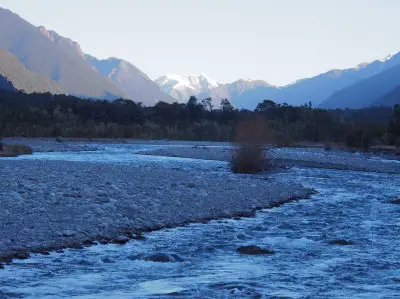
How to Fly Fish a Braided River?
It does not matter wither you are fishing nymphs, dries or streamers. All methods of fly fishing can be productive on braided rivers. The secret is to be versatile and adaptive. Be prepared to change your technique as you slowly fish your way along the river.
I personally find some of the best dry fly fishing can be had on the smaller branches. Due to the fast flowing ripples and rapids, spotting can be difficult. I like to fish the runs with a nymph beneath an indicator.
Swinging a streamer across a deep pool can also be productive. Big trout often hold deep, sometimes 4-5 yards beneath the surface. This can be hard to reach fly fishing, but a beadhead streamer on a sinking line can at times bring success.
Other times I fish a long dropper off a big terrestrial dry fly. The site of the terrestrial can be enough to motivate them to the surface. Trout do not get large by being reckless, so they often inspect the dry before turning away only to grab the ‘much safer’ trailing nymph behind.
This technique also works wonders in backwater, but there the trout are often patrolling the pool. Sometimes, I stalk the fish and watch where their route. When they are facing away I will cast out my dry and dropper, then I wait for the trout to return. I have hooked some good fish that way. Most take the nymph.
At times braided rivers can be natural wind tunnels, casting into a gusting headwind during the day can challenge even the best casters. So many experienced fly anglers, myself included preferring to fish them early morning or the evening to avoid the daytime winds.
What Fly Rod and Reel for Braided River Fishing?
I generally recommend to fish a 6wt in braided rivers. A 6wt generally has enough inertia in the fly line to punch into a head breeze, and enough backbone to fight most trout. I always use a floating line, while the rivers might be big, the runs and rapids are generally shallow.
I am not going to give any model recommendations here. There is simply too many good brands out there to even attempt to single a few out.
Braided rivers are large, often fast flowing and exposed. It is not uncommon to have strong winds blowing down the valleys. This can make casting difficult. Braided Rivers can also hold large trout, and even Salmon. Any equipment needs to be able to stop, turn and land powerful fish which might decide to run downstream.
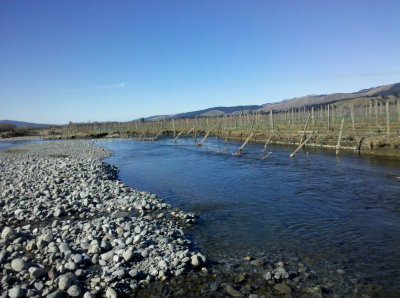
How to Catch Trout Spin Fishing in a Braided River
I learnt to fish on a large braided river, when spinning I keep on moving. I walk until I find the fish. Some days I walk many miles upstream. The further away from other anglers, the more productive the fishing can become.
I have had excellent success on all three main styles of trout spinners. I like fishing heavy inline spinners near the head of the pools, the bright silver and gold blades catch me a lot of fish. Although, the trend to be somewhat on the small side.
Jerkbaits and Rapalas are my bread and butter and are the lures I reach for the most often. I basically cast slightly upstream, and slowly retrieve, trying to keep the lure swimming underwater. My biggest trout are usually caught on a Jetkbaitt
Finally in skilled hands spoons can be very effective at catching trout holding at the bottom of deep pools. There is certainly a skill to it, one which I am still learning. The idea is to cast out, and slightly upstream then allow the spoon to quickly sink to the bottom, then slowly bounce it off the bottom and slowly retrieve on the swing. The ideal weight is the smallest spoon that can reach the bottom before the current starts to swing it back around.
What is the best rod and reel for spinning braided rivers?
Braided rivers are large and open. There is generally plenty of room for casting. This allows long rods to be used.
I generally do not go too crazy, I fish a 6’6 to 7′ rod most of the time. This is quite a standard length for trout fishing. Any reasonable quality graphite rod will do.
I fish a slightly larger river in braided rivers, that is because I sometimes hook into bigger fish like Salmon. Landing a salmon on a 1000 size reel could be challenging. I typically fish a Shimano Stradic 2500 with 6lb fireline which is my preferred line for trout fishing. To that, I tie a leader which is around 7lb or .009″ in diameter. This gives me plenty of capacity and enough line strength to fight most fish.
When I do fish monofilament, I generally fish 6lb line. The trout in the braided rivers are not overly line shy so I can get away with a slightly stronger line.
For more reels recommendations I suggest checking my guide here.
Best Time to Fish Braided Rivers
Periods of low flow often prove to be the most productive. The trout are forced into an ever decreasing number of branches. This concentrates the fish, making them easier to find.
But, the quality of the fishing also depends on the water temperatures. If the water gets too warm, the trout will become reluctant to feed. So I will advise checking the water temperature before fishing them during droughts and periods of hot weather.
Braided Rivers are not always braided
I have heard a saying, change is the only constant when fishing a braided river. The pattern of channels and pools can change after every flood. But, braided rivers rarely flow braided along their entire length.
Down by the sea, where the land flattens. They often become meandering, the pools become longer, and deeper, and the rapids all but disappear.
Up in the headwaters, the river simply does not have enough room to branch in multiple directions. There the tributaries often flow over freestone beds.
Some of the best fishing in braided rivers is in areas where they are not actually braided. There the bed is more stable, which the trout find better to survive.
Old Braids can become Spring Creeks
Earlier in this article, I mentioned backwaters, but sometimes a whole channel can be cut off from the main flow. If deep enough, the spring water will continue to flow and a new spring creek would be born.
This means, that spring creeks can often be found flowing into braided rivers. If the main river is flowing too high, the spring creeks provide a good backup option.
Conclusion
Braided Rivers might be rare internationally, but they remain one of my favorite types of rivers to fish. Let me know, if you have any luck fishing them.

